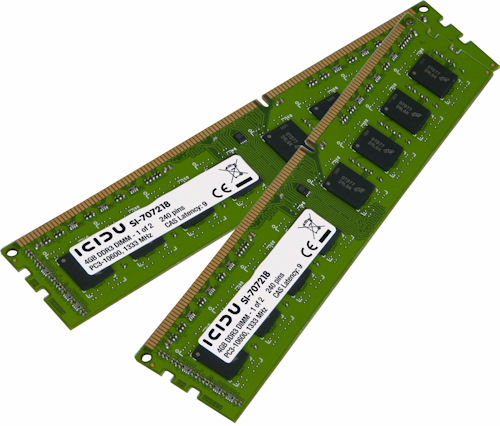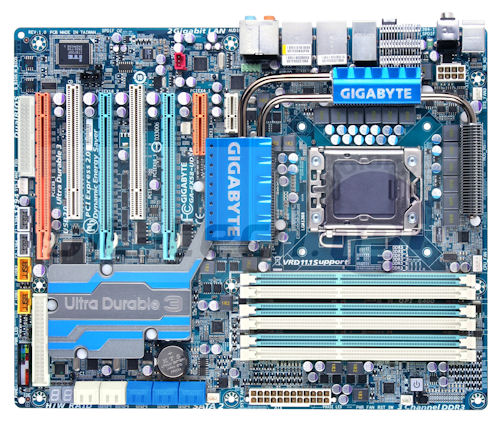Your Next CAD Workstation
Latest News
August 1, 2012
By Peter Varhol
Just about every engineer would like the newest and most powerful workstation available. Alas, we can’t have everything we would like. Budget realities and corporate cultures largely determine when upgrades and new purchases occur. But with a little research, engineers can often make a case for a specific upgrade at a specific time—or even an entirely new computer.
An informal Internet survey done by CAD software vendor SolidWorks indicates that upgrades and new machines run the gamut from annually to when the computer is no longer able to run new software.
All of this raises the questions of how often to buy, what to buy, what can be upgraded, and when should a system be replaced completely. As might be expected, there is no single correct answer, but there are ways to help engineers weigh the pros and cons to make a good decision for their circumstances.
The Learning Curve
Upgrading existing workstations, and buying new ones, doesn’t automatically confer a productivity advantage in engineering work, even if it is faster. In addition to the downtime needed to perform and upgrade, or to provision a new workstation, there is always a learning curve involved if the upgrade involves new software or more recent versions of existing software.
Should You Go for a Drive? Faster spinning drives or solid-state drives (SSDs) load applications and CAD files faster, but will they make a difference in regular work? |
All of that slows you down. According to Eurocom President Mark Bialic, you have to take downtime and the learning curve into account in any upgrade situation. In addition to the upgrades or new systems, taking a workstation out of service is a loss to the engineer and the project. If the project consists of many engineers, the loss of productivity can be enormous.
There are upgrades that are intended to be a band-aid, lasting perhaps six months or at most a year, and others that may last two or three years, or even longer. The trick is to manage your upgrades and new systems to make effective use of your budget, while also minimizing engineering downtime. This requires planning ahead and looking at the entire lifecycle of your hardware and software, rather that doing ad hoc upgrades when requirements and prices dictate.
On the Hardware Side
The most important hardware components include:
• Video—If you choose the highest-performing video card with the most video memory, you can make that last three or four years. Even a mid-range professional card can last a couple of years, and these are relatively easy to replace.
In a podcast with DE’s Senior Editor Kenneth Wong, HP’s Marketing Manager for Workstations, Tom Salomone, indicated that CAD work alone rarely makes use of the most powerful graphics cards. “If users are doing basic 2D CAD or just a little 3D CAD, low-end is enough,” he said. “But if they’re doing more sophisticated CAD work ... then they can certainly benefit from mid-range graphics cards.”
• Storage—Physically replacing a disk drive is relatively easy, and can typically be accomplished in an hour or less. However, the existing disk drives usually have the operating system, applications and data files—all of which have to be backed up and reinstalled. Imaging disks can take some of the pain out of the reinstallation process, and regular backups are essential under any circumstances.
• Memory—Essentially a short-term upgrade, additional memory can be installed in an hour or less (typically) without changes to other hardware or software. Memory upgrades can involve adding more single in-line memory modules (SIMMs) if the slots are available, or replacing existing SIMMS with higher-density ones. Depending on the size of the assemblies you work with, memory may or may not speed up your work, but it can make your overall system more stable. Even for smaller assemblies, many users report that more memory can make an existing system more stable.
 |
| Memory is an easy upgrade that can add life to your workstation, although it won’t substantially improve your performance unless you’re working with larger assemblies. |
“We think the typical user today needs at least 8GB of RAM,” said Salomone. “A lot of people I talk with have 16GB of RAM and in the near future, 32GB won’t be unusual for a CAD user.”
• Processor—Processor upgrades are more difficult, often because the pin configurations between them are different. Processors are also relatively expensive, and new state-of-the-art Intel Xeon processors can cost $1,000 or more. Given these factors, according to Eurocom’s Bialic, it’s best to think of processors as a long-term upgrade—or even better, consider it as a part of a complete system replacement.
“If you are replacing the motherboard, you might as well also replace the system, to make sure everything works together well,” he adds.
Many workstations have dual processor slots, but design organizations often don’t fill the second slot because CAD software tends to be single-threaded. After a couple of years, it’s not uncommon to look to filling that second slot as an easy upgrade. If your workload has changed during that time, it’s worthwhile investigating whether there would be an advantage.
Software Upgrades
Generally speaking, CAD software and other applications are versioned on an annual basis. Not all engineers upgrade when new software is released, often waiting until they need the new capabilities, or when support for previous versions expires.
Software upgrades can be more complex than hardware changes, because of the dependencies among different applications, as well as the need to learn new features and ways of working. This makes it imperative to plan software upgrades at least as carefully as hardware upgrades, and include training and other ways of supporting new ways of working.
Because software upgrades usually involve new features, they should be balanced between necessity and desirability, done often enough so that engineers have new capabilities at hand, but not often enough to disrupt ongoing engineering work.
Multiple applications should be updated at the same time—a new CAD version combined with the next Microsoft Office suite, for example. These configurations often require testing by IT and engineering ahead of the actual upgrade, so that applications work with a given hardware setup.
Stack vs. Stagger
Upgrades and replacement are a function of both hardware and software. Is it better to stagger these upgrades, so that engineers are offline for relatively limited periods of time, or stack them together so that they are performed all at once?
While circumstances vary among organizations, stacking upgrades is usually the approach that results in the least amount of total downtime, says Bialic. While staggering can involve shorter periods of downtime, those periods will be more frequent, possibly three or four times a year. By incorporating multiple upgrades into a single cycle, you can take advantage of IT efficiencies—while also losing less engineering time.
 |
| If you’re considering replacing the motherboard, it’s likely time to purchase a new system altogether. |
While buying new hardware and software can be expensive, planning your upgrades and knowing when you need to do so can both save money and provide a way to maximize computer performance and engineering productivity for many years. This includes determining what hardware requirements drive your applications, and what applications you need in order to perform your engineering activities.
When the workstation is new, the engineering or IT group should have a complete plan for its lifecycle. While that plan could change over time because of new technologies or workloads, there shouldn’t be any surprise on when to upgrade, and what upgrades to undertake.
Contributing Editor Peter Varhol covers the HPC and IT beat for DE. His expertise is software development, math systems, and systems management. You can reach him at [email protected].
More Info
Dassault Systèmes SolidWorks Corp.
Eurocom Corp.
HP
Podcast
Subscribe to our FREE magazine, FREE email newsletters or both!
Latest News
About the Author
Peter VarholContributing Editor Peter Varhol covers the HPC and IT beat for Digital Engineering. His expertise is software development, math systems, and systems management. You can reach him at [email protected].
Follow DE





